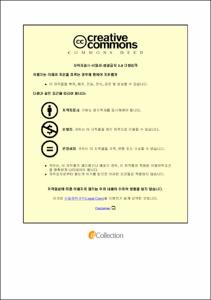Ulsan Univ. Repository
Thesis
General Graduate School
Materials Science & Engineering
1. Theses (Master)
ADC12 알루미늄합금 다이캐스팅 판재의 겹치기 마찰교반접합부 특성에 관한 연구
- Abstract
- 최근 지구 환경보호와 에너지 절감을 위한 기술개발 요구가 높아짐에 따라, 자동차산업에서는 차량 경량화를 위해 알루미늄과 같은 경량금속의 사용량과 적용 분야가 증가하고 있다. 하지만, 알루미늄합금의 경우, 기존 철강소재 대비 가격 상승 문제가 있어, 전신재 대비 가격 경쟁성이 있는 주조재의 적용 또한 증가하고 있다. 이러한 알루미늄합금에 기존의 사용되고 있는 용융용접법을 적용하는 경우, 표면의 자연 산화막 및 높은 열전도도 등으로 인해 요구되는 용접특성을 얻기가 어렵다는 문제점이 있다. 특히, 주조재의 경우, 전신재에 대비하여 기공과 편석 등과 같은 주조결함을 내포하고 있기 때문에, 더욱 용융용접의 적용이 힘든 점이 있다. 따라서, 이를 해결하기 위해 고상접합기술 중 하나인 마찰교반접합(Friction Stir Welding, FSW)를 적용시 용융 및 응고과정에서 발생하는 문제점을 해결할 수 있다. 하지만, 마찰교반접합(Friction Stir Welding, FSW)의 연구는 대부분 맞대기이음부(butt joint) 형성에 기초를 두고 연구 및 개발이 이루어졌으며, 주로 알루미늄합금 전신재의 적용에 관해 연구가 진행되었다. 하지만 차체부품의 경우, 겹치기이음부(lap joint)에 대한 요구가 많으므로, 겹치기 마찰교반접합 (Friction Stir Lap Welding, FSLW)에 적용에 관한 연구가 필요하다.
본 연구에서는, 겹치기 마찰교반접합 기술을 두께가 2.0 mm인 ADC12 알루미늄합금 다이캐스팅 판재에 적용하였다. 또한 접합변수에 따른 겹치기 마찰교반접합부의 특성에 관해 조사하였다. 그 결과, 접합부 영역은 크게 모재부, 열-기계적 영향부, 교반부으로 구분되었으며 열영향부는 나타나지 않았다. 교반부의 경우 2차상이 미세한 입자상으로 비교적 균일하게 분산되어 있었으며, Al기지는 재결정에 의해 미세화 되고 크기가 비교적 균일해졌다. 그 결과, 교반부에서의 경도 편차는 모재부에 비해 감소하였다. 접합부 내부결함의 형태는 크게 2가지 형태, 즉, Void형태의 불연속적인 결함이 형성되는 경우와 Tunnel 형태의 연속적인 결함이 형성되는 경우로 구분되었다. 이러한 결함은 모두 상판 AS측 접합부 내부에서 발생하였으며, Tunnel 형태의 결함이 발생하는 경우, 상온인장전단하중값에 악영향을 미치는 것으로 판단된다.|In recent years, as the demand for technology development for global environmental protection and energy saving increases, the amount of use and application of lightweight metals such as aluminum is increasing in the automobile industry to reduce vehicle weight. However, in the case of aluminum alloys, there is a problem of rising prices compared to existing steel materials, So the application of cast materials that are price-competitive compared to wrought materials is also increasing. when fusion welding is applied to an aluminum alloy, there is a problem in that it is difficult to obtain required welding properties due to the natural oxide film on the surface and high thermal conductivity. In particular, the cast material contains casting defects such as Pores and Segregation, etc. compared to the wrought material, making it difficult to apply fusion welding. Therefore, when applying friction stir welding (FSW), which is one of the solid-state welding technologies, to solve this problem, it is possible to solve the problems that occur during the melting and solidification process. But, the research and development of Friction Stir Welding (FSW) were mostly based on the formation of butt joints, and it was mainly conducted on the application of wrought aluminum alloy. However, in the case of car body parts, there is a lot of demand for lap joints, so in order to apply cast aluminum alloy to car body parts, a study on application to friction stir lap welding (FSLW) is required.
In this study, FSLW technology was applied to ADC12 aluminum alloy die-casting plates with 2.0 mm thick. Also, the characteristics of friction stir lap joint according to the welding parameters were investigated. As a result, the cross-section of joint area was largely divided into , , . And did not appear. In the case of SZ, the secondary phase was relatively uniformly dispersed in the form of fine particles, and Al matrix was refined by recrystallization, and the size was relatively uniform. As a result, as the microstructure in SZ became uniform compared to the BM structure, the hardness variation also decreased. There were two types of internal defects in the joint, first was discontinuous defect in the form of void type defect, and second was continuous defect in the form of tunnel type defect. All of these defects occurred inside the junction on the AS side of the upper plate, and when tunnel-type defects occur, it was judged that the tensile shear load is adversely affected.
- Issued Date
- 2021
- Awarded Date
- 2021-02
- Type
- Dissertation
- Affiliation
- 울산대학교
- Department
- 일반대학원 첨단소재공학과
- Advisor
- 권용재
- Degree
- Master
- Publisher
- 울산대학교 일반대학원 첨단소재공학과
- Language
- kor
- Rights
- 울산대학교 논문은 저작권에 의해 보호받습니다.
- Appears in Collections:
- Materials Science & Engineering > 1. Theses (Master)
- 파일 목록
-
-
Download
 200000373479.pdf
기타 데이터 / 22.8 MB / Adobe PDF
200000373479.pdf
기타 데이터 / 22.8 MB / Adobe PDF
-
Items in Repository are protected by copyright, with all rights reserved, unless otherwise indicated.